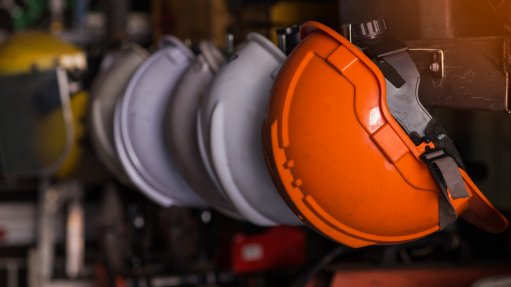
A GROWING INDUSTRY The personal protective equipment industry had a turnover of about R57-million over the last financial quarter of 2017 and an 11% turnover increase from 2016 to 2017
Companies buying personal protective equipment (PPE) without conducting adequate market research on vendors and the products supplied may result in more harm than good, says labour, financial assistance, broad-based black economic empowerment and PPE outsourcing company Innovative Solutions Group (ISG) CEO Arnoux Maré.
“Employers have become more aware of the dangers of inadequate safety equipment to employee safety and a company’s bottom line in recent years, but they are still buying subpar PPE under the advisement of erroneous suppliers to cut costs.”
He adds that a company should spend at least between 5% and 10% of its operating costs on its initial PPE outlay purchases.
“No one wants to see their employees get hurt, but I think incorrect advice, unreliable producers and poor-quality products are the big reasons why companies have to cut costs in the first place,” says Maré.
However, statistics published in 2017 by Occupational Care of South Africa (OCSA) established that unsafe working conditions contributed to only 10% of the construction industry’s work-related injuries, suggesting that employer action is seldom to blame for industry-related injuries. OSCA statistics further pointed out that 88% of all incidents were attributed to safety procedure being incorrectly adhered to by employees.
Notwithstanding, Maré fervently states that no party in particular is to blame for industry incidents, and that inadequate PPE use is often a double-sided issue. “The primary issue is that PPE is considered a grudge purchase by all industries. This inevitably leads to organisations turning to the cheapest suppliers they can find.”
Buying PPE from the cheapest supplier often results in buying substandard-quality equipment, Maré claims stating that, in many such cases, this results in PPE that is uncomfortable to wear, with workers subsequently not wearing PPE and getting injured.
He is sympathetic towards companies, stating that, “given the current economy, companies do need to look for the cheapest supplier”, but is adamant that companies do not need to compromise on the quality of PPE equipment to find a competitive price. He points to market research being the best ways of finding quality affordable PPE and aligning this with PPE education.
Maré states that Innovative PPE Solutions (IPS) – the PPE outsourcing branch of ISG – relies on a team of researchers which scrutinise all such products on the market. “If the researchers find that a brand of shoes, for instance, is giving problems in other companies, we drop the brand immediately. If our clients insist on buying it, we try to convince them to consider more reliable brands and materials.”
He highlights a case were ISG helped a company that had to deal with strike action, owing to an increase in work-related injuries due to poor quality safety boots being purchased for employees. The brand ISG had researched and suggested to the company was not only cheaper but also led to a 30% boost in productivity.
Often, the issue lies with business owners and employees not being properly versed in PPE products and safety regulation, adds Maré. He believes the Occupational Heath and Safety Act is a complex document that, in many cases, is misunderstood by employers and, as a result, employers find health and safety precautions challenging to implement. “It’s not something being done purposefully, it’s more an educational thing that needs to happen.”
He says the best way of combating the use of poor-quality PPE is through educating employers and employees on the necessity of using quality equipment. “If employers see that using quality PPE can reduce a company’s operational cost by decreasing a company’s downtime, then they will conduct more extensive research before buying PPE.”
Maré emphasises that companies also need to educate employees on the importance of wearing PPE and adhering to safety guidelines.
“PPE is there to save lives. It is there to prevent injuries. It protects employees in their work environment and ensures they get home safely to their families. So, it is not something on which we can take a shortcut,” concludes Maré.